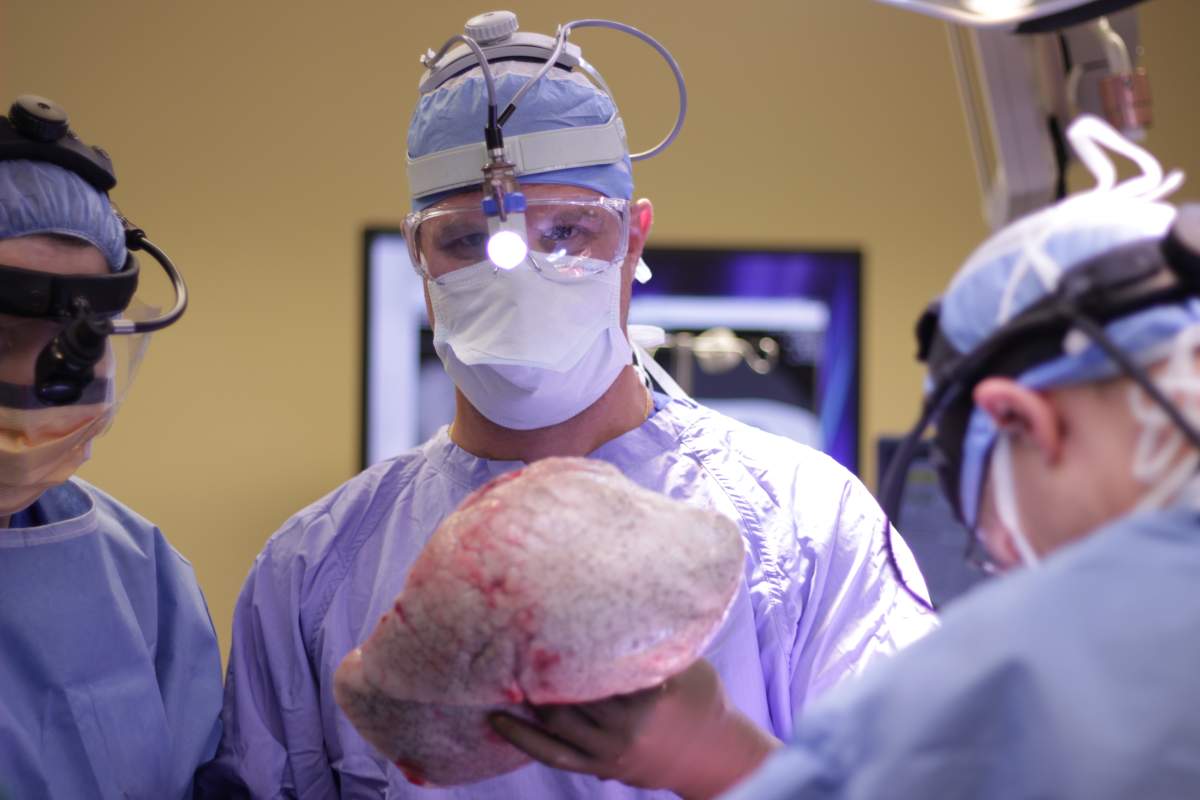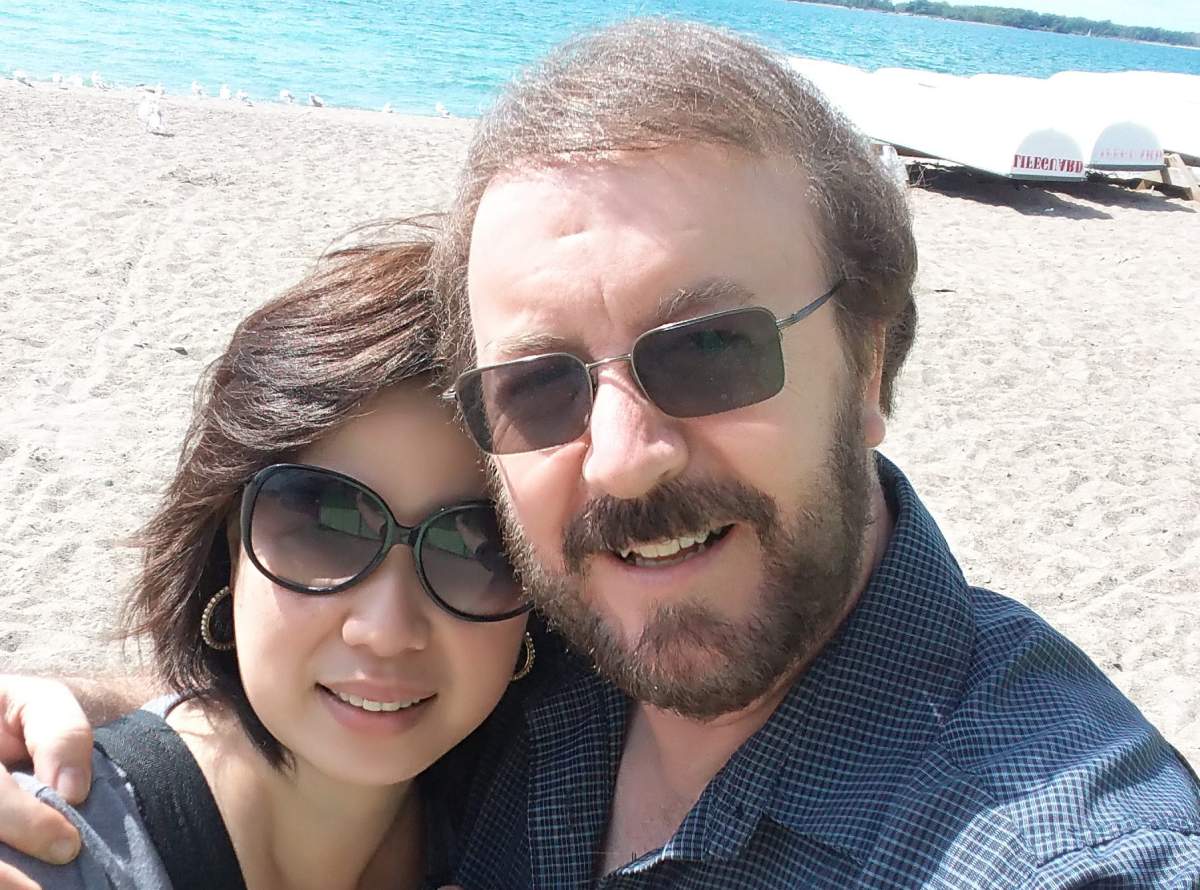Surgical director Dr. Marcelo Cypel has had his hands full during the COVID-19 pandemic.

The University Health Network’s Ajmera Transplant Centre in Toronto, where he works, is the largest lung transplant program in the world in terms of volume. Each year, his team performs around 200 lung transplants for a variety of lung diseases, but that number is increasing fast.
“The main limitation is the availability of organ donors,” he says. “We do a lot more than other centres. But if you think about overall, it is still not enough, as we do have still patients waiting for transplantation.”
In February, Cypel performed a double lung transplant on a patient whose lungs were irreparably damaged by COVID-19 — believed to be the first of its kind in Canada.
His patient, 61-year-old Timothy Sauve, was first brought to Trillium Health Partners in his hometown of Mississauga on Dec. 16. Eight days earlier, Sauve says he’d been hit by a dizzy spell while he was brushing his teeth that was so severe it knocked him off his feet into a wall, causing him to blackout for “half a second.”
Prior to contracting the virus, Sauve says he was a physically fit and healthy man. But by the time he got to the hospital, Sauve says he couldn’t breathe, he had a high fever and he’d become so dizzy so often that it was hard to stay balanced at all.
After consulting with doctors, he was transferred to the University Health Network’s Toronto General Hospital, which is home to Canada’s largest organ transplant program. During his eight-week stay at the hospital until his double lung transplant in February, he was given all of his food through intravenous drips.
“I had no food and I had no water,” Sauve tells Global News. “It was a white substance they were putting down my nose into directly into my stomach.”
By the time he was assessed by Cypel, Sauve’s lungs were scarred beyond repair and he was on “very high” doses of oxygen. Sauve had developed a lung disease called pulmonary fibrosis and needed an extracorporeal membrane oxygenation (ECMO) machine to artificially pump and oxygenate his blood.
Normally, Cypel says healthy lungs are “a very light organ” full of air.

Get weekly health news
“It’s very easy for the air to fuel up the lung like a very easy-to-feel balloon,” he added.
But Sauve’s lungs were stiff and had shrunk by roughly 50 per cent, making it difficult for air to flow.
The virus had attacked his lungs, but left all of his other organs functioning perfectly, making him a candidate for the rare transplant procedure that saved his life.

According to Cypel, the likelihood of success for candidates who have been approved for double lung transplants is above 80 per cent. But that doesn’t mean they aren’t without challenges.
The procedure is used as a last resort for patients whose lungs “won’t get any better,” Cypel says.
Patients who undergo double lung transplants need to be completely dependent on heavy levels of oxygen and dependent on artificial lung devices to be considered eligible for the procedure. The surgery itself can be immensely difficult on the body, and candidates are also usually on blood thinners, which can put them at higher risk of bleeding complications.
Altogether, Cypel says the procedure has been done just “40 or 50 times” worldwide.
Despite the surgery’s success, he says he doesn’t expect to see many more double lung transplants in the future. The lungs are extremely resilient, he says, and the lack of available organs for transplantation has pushed his team to become more selective with each candidate.

The road to recovery for Cypel’s patient, Sauve, has not been an easy one.
His entire household, including his common-law partner Julie Garcia, her 24-year-old son and her father, 80-year-old Juanito Teng, all tested positive for COVID-19 around the same time Sauve fell ill.
Teng died in the ICU shortly after being admitted to hospital, in a room right next to Sauve’s. No one in his family knows how they contracted the virus or who was infected first.
In total, Sauve says he spent about two months lying in a hospital bed, unable to stand or move. Since his operation in February, Sauve says he has lost at least 30 pounds. He says he will have to take daily medication to ensure his body doesn’t reject his new lungs for the rest of his life.
But four months after testing positive for COVID-19, Sauve says he is “recovering very well” from his battle with the virus.
Now at the University Health Network’s Toronto Rehab Bickle Centre, he does 45 minutes of physiotherapy each day to try to regain his strength and rebuild the muscle he lost while he was bedridden. He can get up from his hospital bed using his feet (“today I did it four times!”) and he can eat solid food again.
“It still feels like a dream to me,” he tells Global News. “I’ve been given my life back. Every day is really a gift, and it took this terrible, terrible disease for me to realize that.”
Sauve says it will take months until he is finally able to return home. But he’s OK with that. The hospital staff have been “wonderful.”
“We’re like friends now,” he says. That, and he doesn’t want to have to use a walker to get through his front door.
“I want to leave here on my own two feet and go back home and be with my beautiful partner. I miss her so much. It’s very, very hard to be here without her,” Sauve says.
“I’ve never been away from her since the day I met her … and I want to be with her every day after this.”
— With files from the Canadian Press










Comments